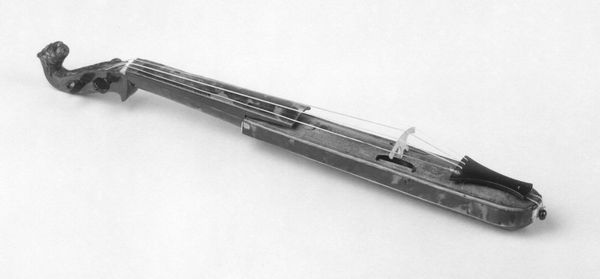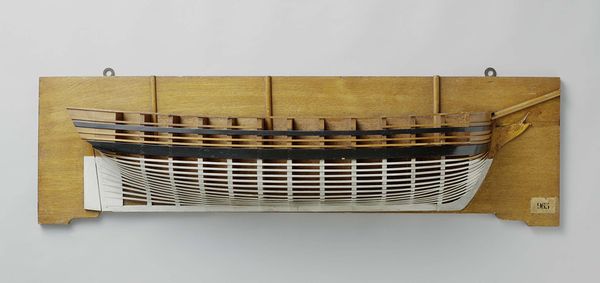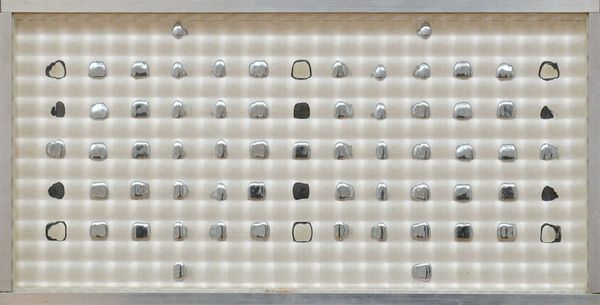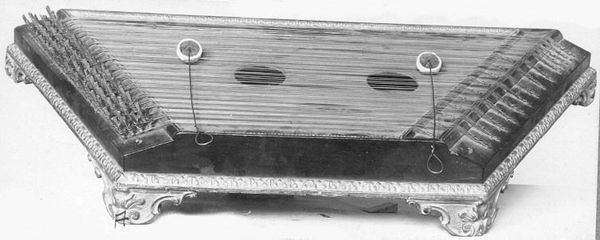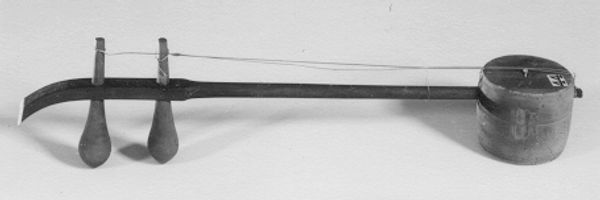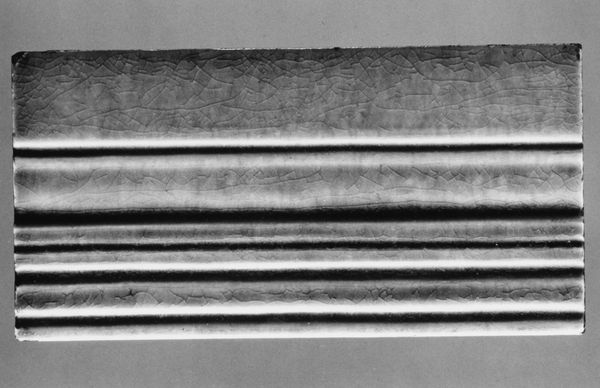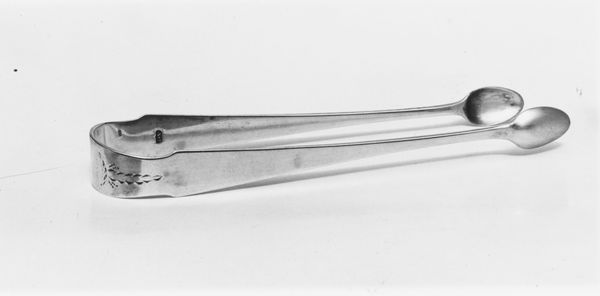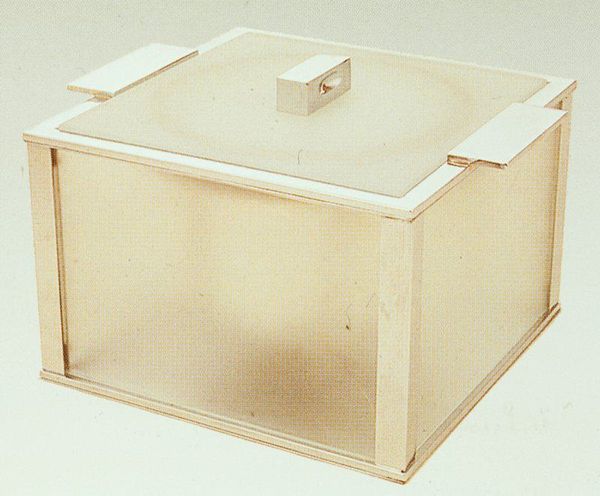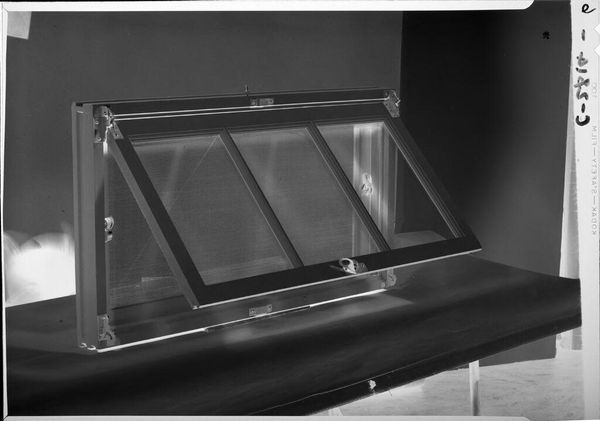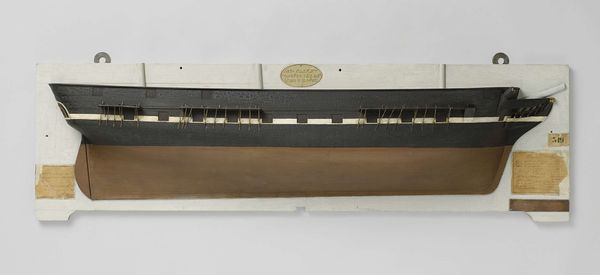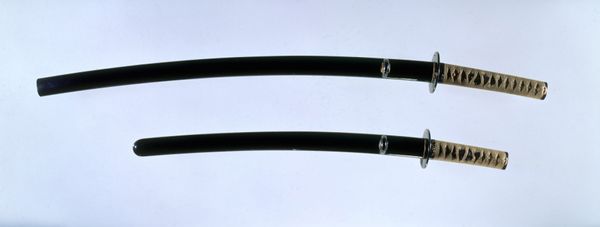
metal, glass, sculpture
#
metal
#
sculpture
#
glass
#
geometric
#
sculpture
#
abstraction
#
modernism
Dimensions: 3 1/2 x 20 1/4 x 6 1/2 in. (8.89 x 51.44 x 16.51 cm)
Copyright: No Known Copyright
Editor: This intriguing artwork, "Centerpiece," made around 1934 by James Amster, employs both metal and glass. The repetition and strict geometry almost give it an industrial feel, like part of a machine. What's your take on this piece? Curator: That’s a sharp observation about its industrial aesthetic. Considering the date, we're in the midst of the Great Depression. Mass production and functional design held social value. Do you think its title, "Centerpiece," might be ironic, challenging traditional decorative arts in favor of something more...utilitarian-seeming? Editor: That's an interesting thought – using something that resembles a machine part as a dining table centerpiece would definitely challenge conventions! But why do you think the artist would do that? Curator: The interwar period witnessed radical shifts in social values and artistic expression. Artists questioned traditional forms and materials. Placing a "machine" at the center of domestic life disrupts expectations and prompts us to consider the relationship between industry, art, and the home. Its austere aesthetic could also be seen as a reflection of the economic hardships of the time, a counterpoint to ostentatious displays of wealth. Editor: So it's less about beauty in the traditional sense and more about commenting on society? Curator: Precisely. Art during this period frequently took on a public role, engaging with social and political realities. Think about the role museums played, then. Who were they serving, and how were they reflecting society's priorities? This sculpture exists in dialogue with those bigger questions. Editor: That makes me see it in a completely different light. It's not just a pretty object; it's a statement. Curator: Exactly. It encapsulates the era's tensions, where the promise of progress and anxieties about industrialization coexisted. Hopefully that context will help visitors engage with the piece on a deeper level.
Comments
No comments
Be the first to comment and join the conversation on the ultimate creative platform.
